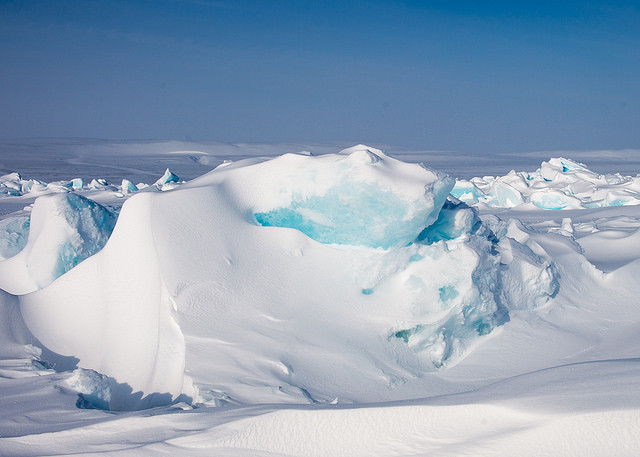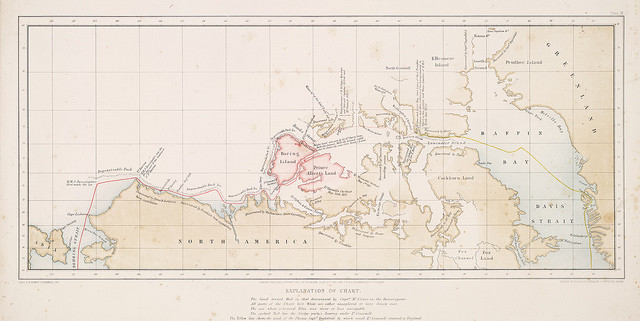Sir John Franklin, a name synonymous with Arctic exploration and the enduring mystery of the Northwest Passage, was a British naval officer and explorer whose life was marked by both remarkable achievements and tragic loss. Born on April 16, 1786, in Spilsby, England, and perishing on June 11, 1847, aboard HMS Erebus near King William Island, Nunavut, Franklin’s legacy is deeply intertwined with the exploration of the Canadian Arctic. He was a celebrated figure in his time, lauded for his surveying skills, leadership in previous Arctic expeditions, and for his unwavering pursuit of geographical discovery. Yet, he is perhaps best remembered for leading the ill-fated 1845 expedition into the Arctic, an endeavor that aimed to finally chart the elusive Northwest Passage but ended in disaster, claiming the lives of Franklin and all 128 men under his command. The story of Sir John Franklin and his lost expedition remains one of history’s most captivating and haunting tales of polar exploration.
 Sir John Franklin.
Sir John Franklin.
Early Life and Naval Career of John Franklin
Entering the Royal Navy at the young age of 14 in 1800, Sir John Franklin embarked on a career that would define him as one of history’s great explorers. His early naval service was instrumental in honing the skills that would later serve him in Arctic exploration. Crucially, he developed expertise in surveying and cultivated a deep interest in natural science, both of which were highly valued by the Royal Navy, a leading institution in promoting scientific exploration during the 18th and 19th centuries.
From 1801 to 1803, Franklin served under his uncle, Matthew Flinders, a distinguished navigator, on an expedition that meticulously charted the coastline of Australia. This experience provided him with invaluable practical training in maritime exploration and surveying techniques. Beyond exploration, Franklin also actively participated in significant naval conflicts of his time. He served with distinction under Admiral Lord Nelson in the Napoleonic Wars, participating in the Battles of Copenhagen in 1801 and Trafalgar in 1805, pivotal engagements in British naval history. Later, during the War of 1812, he was wounded in action during the British offensive against New Orleans in 1814. These early experiences forged Franklin into a seasoned naval officer, preparing him for the challenges and leadership roles he would later undertake in the Arctic.
Exploring the Canadian Arctic: Franklin’s Early Expeditions
Following the end of the Napoleonic Wars and the War of 1812, the British Admiralty renewed its focus on geographical exploration, particularly the search for the Northwest Passage, a sea route believed to connect the Atlantic and Pacific Oceans through the Arctic. Sir John Franklin’s proven skills, especially his expertise in surveying and his robust naval experience, made him an ideal candidate for leading these Arctic endeavors.
In 1818, Franklin was given command of the Trent, a modified whaling ship, as part of an expedition led by David Buchan. This mission aimed to find a passage through the polar ice northwest of Spitsbergen, a Norwegian island in the Arctic Ocean. Despite months of navigating through treacherous pack ice, the expedition was ultimately unsuccessful in finding a viable passage and was called off.
Undeterred, Franklin was tasked the following year with an even more ambitious undertaking: mapping the northern coastline of the North American continent. This expedition (1819-1822) was an arduous overland journey. Franklin and his team travelled vast distances by land and canoe, navigating the Coppermine River to reach the Arctic Sea in July 1821. This expedition, despite facing immense hardships and logistical challenges, achieved its primary objective, mapping a significant portion of the Arctic coastline for the first time.
Franklin’s second major Arctic expedition (1825–27) was better organized and equipped. Approaching via boats up the Mackenzie River, Franklin divided his party at the Mackenzie Delta. One group headed east to continue mapping towards the Coppermine River, while Franklin led the other westward towards Alaska. This expedition further expanded the mapped Arctic coastline and solidified Franklin’s reputation as a leading Arctic explorer. Upon his return to Britain, Franklin was celebrated as a national hero. He published narratives of his journeys, received a knighthood, was promoted to captain in the Royal Navy, and elected a Fellow of the Royal Society, recognizing his significant contributions to geographical knowledge and exploration. Despite the accolades, Sir John Franklin remained known for his modest and private nature.
The Doomed Northwest Passage Expedition of Sir John Franklin
Despite his previous Arctic successes, Sir John Franklin’s career as an active explorer appeared to stall in the decades following his expeditions of the 1820s. The Admiralty’s interest in Arctic exploration waned, and from 1836 to 1843, Franklin served as Lieutenant-Governor of Van Diemen’s Land (now Tasmania), a British penal colony. Although he attempted to implement progressive political and social reforms, he clashed with the Colonial Office and was not reappointed.
However, fate intervened upon his return to Britain. The Admiralty had renewed its efforts to finally complete the charting of the Northwest Passage. Significant progress had been made since Franklin’s earlier expeditions, narrowing the unmapped section of the passage to approximately 500 km between Barrow Strait and the mainland. Despite being in his late fifties, Sir John Franklin passionately campaigned to lead this pivotal expedition. His established reputation, supported by influential friends and fellow explorers, convinced the Admiralty to grant him command in February 1845.
This expedition was unprecedented in its scale and resources. Equipped with the HMS Erebus and HMS Terror, both sturdy vessels modified for Arctic service and equipped with auxiliary steam engines, desalination equipment, and extensive provisions, the Franklin expedition set sail with 134 officers and men. They carried provisions for three years, including vast quantities of preserved food, research instruments for various scientific disciplines, photographic equipment, and even libraries. Optimism was high, with many believing the expedition would successfully navigate the Northwest Passage within a year.
 Along the Barrow Strait, Nunavat, 2014.
Along the Barrow Strait, Nunavat, 2014.
Departing the River Thames on May 19, 1845, the expedition sailed into Baffin Bay. They were last sighted by whaling ships on July 26, 1845, and then vanished into the Arctic vastness. No word was ever heard from the Franklin expedition again, marking the beginning of one of the most enduring and tragic mysteries in the history of exploration.
The Search for Franklin and the Unveiling of a Tragedy
The disappearance of the Franklin expedition sparked a massive search effort. Between 1847 and 1859, approximately 30 expeditions were launched to find the lost ships and crew, funded primarily by the Admiralty and Lady Franklin, Sir John Franklin’s determined wife. The search continued well into the late 19th and early 20th centuries, although hopes of finding survivors had long faded.
These search missions, while failing to rescue Franklin and his men, gradually pieced together the tragic fate of the expedition. Evidence revealed that after entering Lancaster Sound, the expedition overwintered at Beechey Island in 1845-46. In the summer of 1846, they sailed south through Peel Sound and Victoria Strait, only to become trapped in heavy ice off King William Island. The ice conditions were unusually severe, preventing the ships from breaking free.
Sir John Franklin died aboard the Erebus on June 11, 1847. By April 1848, with dwindling supplies and worsening conditions, the remaining survivors abandoned the ships and attempted to trek overland to safety. Tragically, none survived. Later accounts, including those based on Inuit oral testimonies gathered by explorer John Rae, revealed harrowing details of starvation, desperation, and even cannibalism among the desperate crew, shocking Victorian society.
 Franklin Expedition Site
Franklin Expedition Site
Despite the tragedy, the search for Franklin inadvertently contributed significantly to Arctic exploration and mapping. The extensive search efforts resulted in a more complete understanding of the Arctic geography and, ironically, helped to chart the remaining sections of the Northwest Passage that Franklin had sought.
Modern Discoveries and the Enduring Legacy of Sir John Franklin
In recent decades, renewed interest and advancements in technology have led to significant breakthroughs in understanding the Franklin expedition. Archaeological investigations, combined with Inuit oral history, have provided deeper insights into the expedition’s final days.
Forensic analysis of the remains of some crew members found on Beechey Island in the 1980s suggested lead poisoning from canned food as a contributing factor to the expedition’s demise. However, later studies have questioned the extent of lead contamination and its role in the tragedy.
The most dramatic discoveries came in the 21st century. In 2014, after years of searching, the wreck of HMS Erebus was located near King William Island. Two years later, in 2016, the wreck of HMS Terror was found in Terror Bay, Nunavut. These discoveries, aided by Inuit knowledge and modern underwater search technology, marked a historic moment in unraveling the Franklin mystery. The wrecks are now Canadian National Historic Sites, co-owned with the Inuit, recognizing their crucial role in locating the lost ships.
 Franklin, Lady
Franklin, Lady
Sir John Franklin’s legacy is complex. While his final expedition ended in catastrophe, his earlier Arctic explorations significantly expanded geographical knowledge and contributed to the charting of the Canadian Arctic coastline. His name remains inextricably linked to the Northwest Passage and the heroic, yet tragic, era of Arctic exploration. The enduring mystery of the Franklin expedition continues to fascinate and inspire, serving as a potent reminder of the perils and allure of polar exploration. The story has also permeated popular culture, most notably through Dan Simmons’s fictionalized novel The Terror and its subsequent television adaptation, further cementing Sir John Franklin’s place in history and imagination.
 A map of the Northwest Passage, created in 1854.
A map of the Northwest Passage, created in 1854.
See also: Arctic Exploration; Exploration; Franklin Search
